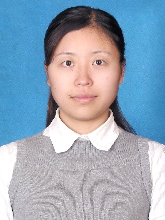
| Prof.Chong-Yung Chi, IEEE Fellow, National Tsing Hua UniversityChong-Yung Chi (IEEE Life Fellow, AAIA & AIIA Fellows) received the B.S. degree from Tatung Institute of Technology, Taipei, Taiwan in 1975, the M.S. degree from National Taiwan University, Taipei, Taiwan in 1977, and the Ph.D. degree from the University of Southern California, Los Angeles, CA, USA, in 1983, all in electrical engineering. He is currently a Professor of National Tsing Hua University, Hsinchu, Taiwan. He has published more than 240 technical papers (with citations more than 7500 times by Google-Scholar), including more than 90 journal papers (mostly in IEEE TRANSACTIONS ON SIGNAL PROCESSING), more than 140 peer-reviewed conference papers, 3 book chapters, and 2 books, including a textbook, Convex Optimization for Signal Processing and Communications: From Fundamentals to Applications, CRC Press, 2017 (which has been popularly used in a series of invited intensive short courses at 10 top-ranking universities in Mainland China since 2010 before its publication). His current research interests include signal processing for wireless communications, convex analysis and optimization for blind source separation, biomedical and hyperspectral image analysis, graph based learning and signal processing, and data security and privacy protection in machine learning. Speech Title: Computationally Efficient MISO Beamforming Design by Convex Optimization and Deep Learning Abstract: Beamforming design is a central task in wireless communication systems for leveraging spatial degrees of freedom to enhance spectral efficiency. Traditionally, the convex (CVX) optimization (CVXopt) has been extensively applied to various beamforming design problems for achieving the performance limit, yet the consequent high computational complexity hinders the crucial real-time implementation in most applications due to the fact that a closed-form solution is either nonexistent or almost prohibitively difficult to find; instead, only numerical solutions must be obtained by time-consuming off-the-shelf CVX solvers. However, time-varying channel conditions and network dynamics necessitate real-time inference. Two inference acceleration philosophies have emerged: 1) customization of CVXopt algorithms; 2) construction and training of deep learning (DL) models that can infer the target beamformer from the given Channel State Information (CSI). In this speech, inspired by the two philosophies, we present two tailored approaches to develop computationally efficient multiple-input single-output (MISO) beamforming designs. 1. Outage constrained (ROC) energy efficient (EE) design: An ROC-energy efficiency (ROC-EE) maximization problem is formulated and solved by 4 CVXopt algorithms, among which, the customized one, called block successive upper bound minimization (BSUM)-projected gradient descent (PGD) algorithm, demonstrates the highest efficiency (2 orders of magnitude faster than the other 3 CVXopt algorithms). 2. KANsformer for scalable EE design: An EE maximization problem is formulated and solved by a DL model, Kolmogorov–Arnold networks (KAN), termed KANsformer, with Transformer as the encoder and KAN as the decoder. The KANsformer can achieve millisecond-level, near-optimal, and scalable inference (3 orders of magnitude faster than CVXopt algorithms). |
Prof. Dongxiao Fu, Kunming University of Science and TechnologyService Discipline Team Leader of Kunming University of Technology, Vice President of Science and Technology of Yunnan Province, Expert of Yunnan Provincial Grassroots Research Station, Senior Member of CCF, Executive Member of Service Computing Committee, Correspondence Evaluator of the National Natural Science Foundation of China, Member of the Teaching Guideline Committee of Computer Science Specialties for Universities and Colleges in Yunnan Province, Kunming Model Worker, Outstanding Doctoral Graduate of Yunnan Province, Reviewer of famous journals, such as IEEE TBD, IEEE TII, and Journal of Computing, and so on. He is also a reviewer of IEEE TBD, IEEE TII, Journal of Computer Science, etc. He has served as the general manager of Kunming Chaoxuntong Technology Co., Ltd, the director of the Department of Computer Science and Technology of Kunming University of Science and Technology, the deputy director of the Information Center of Kunming Iron and Steel Company of WISCOM, the deputy dean of the School of Aeronautics of Kunming University of Science and Technology, and the director of the Project Management Department of Yunnan Provincial Big Data Co. Speech Title: Reputation Measurement for Online Services Based on Dominance Relationships Abstract: Reputation system is an important means to build trust, aid decision making of users, and sustain user loyalty in the context of online services. However, different users inherently have different preferences, and so it is impossible that all users rate services with the same criteria. Thus, aggregating cardinal ratings into reputation will potentially lead to unreliable and misleading result, which makes the impossibility of interpersonal utility comparisons should be considered in reputation systems. A novel reputation measurement mechanism that aggregates ordinal user preferences rather than cardinal ratings into reputation was proposed. By extending the majority rule naturally, dominance relationship between services is defined based on ordinal preferences. Then, reputation measurement is modelled as a problem to find a ranking that indicates the dominance relationships among services. A directed acyclic graph is constructed based on the dominance relationships of services pairs and then the ranking of services is found from the graph. The method satisfies some basic criteria that a reasonable reputation measurement method should satisfy in the context of the impossibility of interpersonal utility comparisons. A comprehensive experimental study and performance analysis are conducted to evaluate the effectiveness and efficiency of the method. |
|
| Prof. Zheng Guan, Yunnan UniversityGuan Zheng, Ph.D., Professor, School of Information Technology, Yunnan University. She is currently a member of the Network and Data Communication Committee of the Chinese Computer Society, a member of the Chinese Society of Communication, and a member of the Chinese Society of Automation.She is also a member of the Chinese Communication Society and the Chinese Automation Society.She has been awarded the “Xingdian Talent” program of Yunnan Province, and is an excellent Communist Party member of Yunnan University. She is mainly engaged in teaching and research work in the field of information and communication engineering, and her research interests include energy-efficient wireless access control, multi-source information fusion and scene sensing, and cooperative resource scheduling in wireless scenes, etc. Speech Title: Exploration and Practice of Artificial Intelligence Enabled Personalized Cognitive State Tracking Abstract: 学生认知状态是学习过程演进的动态表征,因其有助于学习成效归因、诊断和干预,是人工智能时代学校教育实现规模化个性化教育的重要途径。人工智能技术的赋能使得学生认知状态诊断、追踪和干预得以从传统的“实验观察”模式向更加普适的“数据驱动”模式转变。然而,现有认知状态追踪和干预方法在面对多模态个性化认知状态表示、个体差异性挖掘,以及动态学习过程演化等问题时仍存在较大挑战。针对上述问题,研究多诊断视角下认知状态的特征提取、融合方法;通过教育情景、主体与知识的内在关联性挖掘,结合特征对齐和信息融合技术,实现了知识与情景融合的学生认知状态追踪,增强多模态监测数据对学习或教学过程的细粒度表征;经试点应用循证,验证了相关方法在实际教育场景中的有效性。 |


